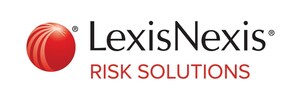New Home Insurance Study Shows Not All Perils Created Equal, Highlighting By-Peril Trends through 2016 to Help Carriers Price with Greater Precision
2017 LexisNexis Home Trends Report Shows Losses Continue to Decline through 2016, But Catastrophes Claims are on the Rise Using 2011-2016 Trend Peril Data Based on Actual Claims Processed
ATLANTA, Sept. 27, 2017 /PRNewswire/ -- The latest study of home insurance trends from LexisNexis Risk Solutions confirms that homeowners in Texas and Colorado suffered the greatest percentage of catastrophic losses due to extreme weather and other peril events in 2016. The good news for insurance carriers is that overall peril loss costs continued to decline, according to the study.
The second annual LexisNexis Home Trends Report identifies key insurance industry trends on a by-peril basis – wind, hail, fire, water, theft, liability, and other – so that insurance carriers can reduce risk and price policies with more precision. New this year, the data from the Home Trends Report is also available on an interactive website which enables visitors to view trended data on a countrywide and statewide level, sort by peril and explore other key insights.
One of the biggest revelations was that almost half (48 percent) of all catastrophe losses originated in just two states: Texas and Colorado. Hail and wind from thunderstorms – rather than extreme weather events like hurricanes – were the biggest loss causes. In fact, nationwide hail losses in 2016 reached their highest level since 2011, comprising approximately 20 percent of all peril losses to the tune of $8.4 billion. Some of the most damaging hailstorms Texas has ever experienced hit homeowners in March and April 2016, causing more than $4 billion in damages and breaking records for the state's most expensive storms.
"The report reveals that not all perils are created equally, and that even within a peril category there will be dramatic geographic differences. Every state has its own nuances," said George Hosfield, Senior Director, Home Insurance, LexisNexis Risk Solutions. "Our historical view of how by-peril trends change over time offers carriers new insights with which they assess and price risks more accurately, ultimately edging them closer to profitability which has been difficult to maintain in the Home insurance market. Insurers need data state-by-state and even at more granular levels because location based risk varies greatly from place to place. While this is particularly evident when thinking of cat events like the hurricanes we are seeing in 2017, the same holds true for all perils on both a cat and non-cat basis."
While catastrophe losses accounted for 30 percent of all claims in 2016, the study found that all peril loss cost continue to trend downward. The key reason: the aggregate (all perils combined) frequency remained steady while the aggregate severity declined.
Another important discovery from the study was the positive impact of an El Niño-influenced mild winter on water perils, particularly in Northeastern states. A strong El Niño brought warm, moist air to the Northeast, resulting in a dramatic drop in the frequency, severity and lost costs of water claims, which are driven largely by frozen water and frozen pipe claims.
Other key findings from the LexisNexis Home Trends Report include:
Wind – After several decades of decline, in 2016, carriers saw an increase in frequency and loss costs due to wind claims, much of it due to destruction to Southeastern states by Hurricane Matthew in October. Estimates of total property damage were approximately $10 billion1. Tornadoes and thunderstorms also contributed to the claims spike, particularly in the Midwest. Overall, more than 25 percent of claims were due to wind damage – the highest since 2013.
Fire – Fire perils (which include lightning) decreased in loss cost and frequency in 2016. The greatest contributors to losses by insurers included the Great Smokey Mountain wildfires in Tennessee, which turned out to be one of the largest natural disasters in the state's history with more than $940 million in losses2. Lightning from summer thunderstorms in the Southeast and Midwest also contributed to claims frequency. But while frequency and loss costs are on the decline, a rise in fire severity was disconcerting.
Water (weather-related) – As noted, El Niño brought respite to the Northeast in terms of frozen water and frozen pipes claims. Massachusetts, for example, saw $240 million in losses in 2015, but just $29 million in 2016. Florida also saw a decrease in its wind-driven water claims from 2014-2016, but California experienced a severe rainstorm in March 2016 that resulted in a spike in wind-driven rain claims.
For more information, visit the interactive website for the 2017 LexisNexis Home Trends Report.
About LexisNexis Risk Solutions
LexisNexis Risk Solutions is a leader in providing essential information that helps customers across industries and government predict, assess and manage risk. Combining cutting-edge technology, unique data and advanced analytics, LexisNexis Risk Solutions provides products and services that address evolving client needs in the risk sector while upholding the highest standards of security and privacy. LexisNexis Risk is part of RELX Group, a global provider of information and analytics for professional and business customers across industries.
http://www.lexisnexis.com/risk/
Media Contact:
Regina Haas
LexisNexis Risk Solutions
Phone: +1.678.694.3569
[email protected]
Mollie Holman
Brodeur Partners for LexisNexis Risk Solutions
Phone: +1.646.746.5611
[email protected]
1 "Billion-Dollar Weather and Climate Disasters," National Oceanic and Atmospheric Administration, accessed August 15, 2017, https://www.ncdc.noaa.gov/billions/events/US/1980-2017.
2 Tennessee Department of Commerce & Insurance; includes both personal lines and commercial insurance claims.
SOURCE LexisNexis Risk Solutions
Related Links
WANT YOUR COMPANY'S NEWS FEATURED ON PRNEWSWIRE.COM?
Newsrooms &
Influencers
Digital Media
Outlets
Journalists
Opted In






Share this article